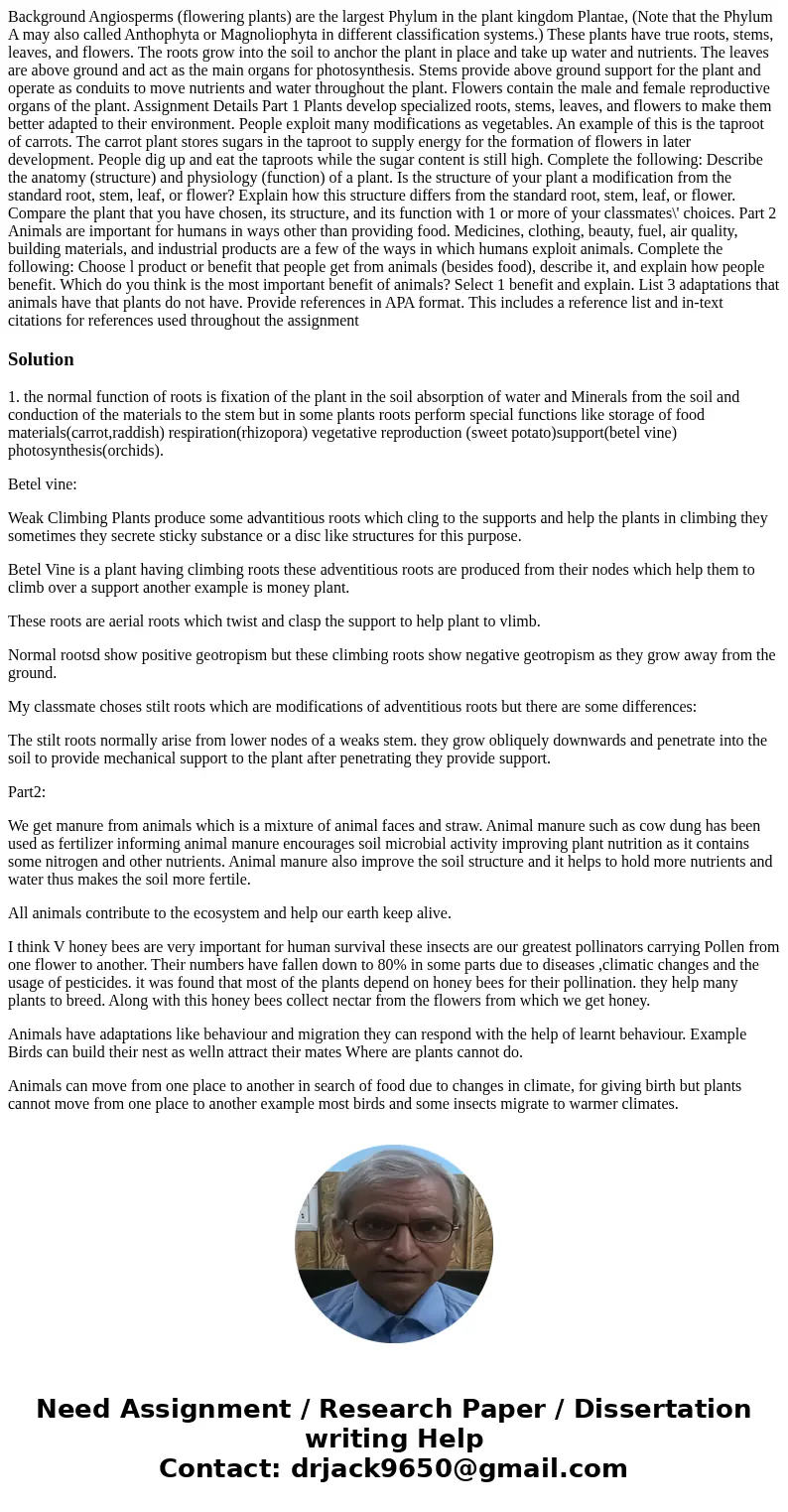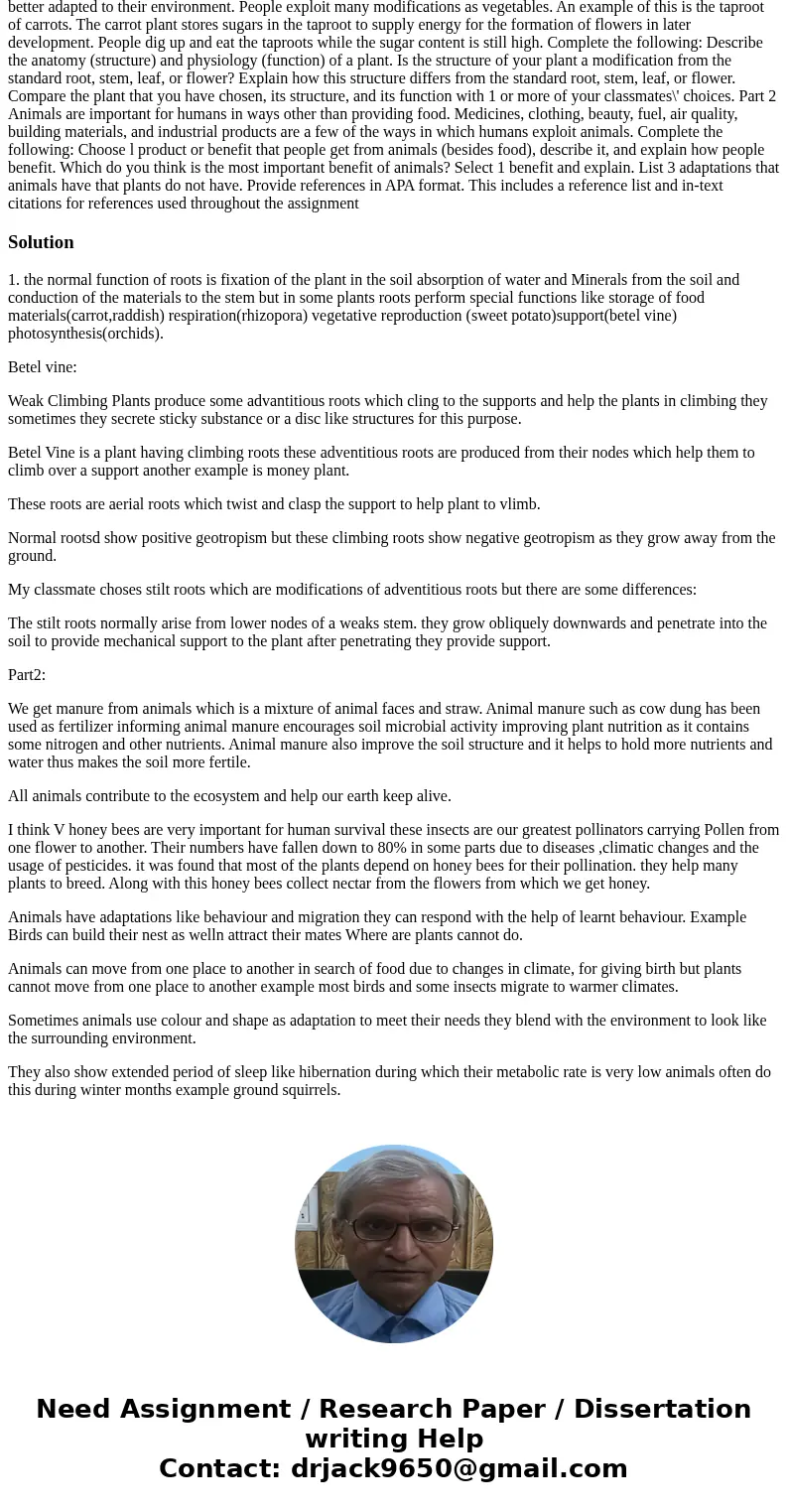Background Angiosperms flowering plants are the largest Phyl
Solution
1. the normal function of roots is fixation of the plant in the soil absorption of water and Minerals from the soil and conduction of the materials to the stem but in some plants roots perform special functions like storage of food materials(carrot,raddish) respiration(rhizopora) vegetative reproduction (sweet potato)support(betel vine) photosynthesis(orchids).
Betel vine:
Weak Climbing Plants produce some advantitious roots which cling to the supports and help the plants in climbing they sometimes they secrete sticky substance or a disc like structures for this purpose.
Betel Vine is a plant having climbing roots these adventitious roots are produced from their nodes which help them to climb over a support another example is money plant.
These roots are aerial roots which twist and clasp the support to help plant to vlimb.
Normal rootsd show positive geotropism but these climbing roots show negative geotropism as they grow away from the ground.
My classmate choses stilt roots which are modifications of adventitious roots but there are some differences:
The stilt roots normally arise from lower nodes of a weaks stem. they grow obliquely downwards and penetrate into the soil to provide mechanical support to the plant after penetrating they provide support.
Part2:
We get manure from animals which is a mixture of animal faces and straw. Animal manure such as cow dung has been used as fertilizer informing animal manure encourages soil microbial activity improving plant nutrition as it contains some nitrogen and other nutrients. Animal manure also improve the soil structure and it helps to hold more nutrients and water thus makes the soil more fertile.
All animals contribute to the ecosystem and help our earth keep alive.
I think V honey bees are very important for human survival these insects are our greatest pollinators carrying Pollen from one flower to another. Their numbers have fallen down to 80% in some parts due to diseases ,climatic changes and the usage of pesticides. it was found that most of the plants depend on honey bees for their pollination. they help many plants to breed. Along with this honey bees collect nectar from the flowers from which we get honey.
Animals have adaptations like behaviour and migration they can respond with the help of learnt behaviour. Example Birds can build their nest as welln attract their mates Where are plants cannot do.
Animals can move from one place to another in search of food due to changes in climate, for giving birth but plants cannot move from one place to another example most birds and some insects migrate to warmer climates.
Sometimes animals use colour and shape as adaptation to meet their needs they blend with the environment to look like the surrounding environment.
They also show extended period of sleep like hibernation during which their metabolic rate is very low animals often do this during winter months example ground squirrels.


 Homework Sourse
Homework Sourse